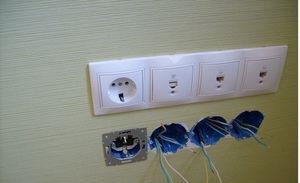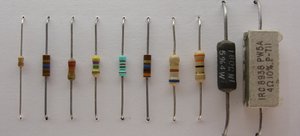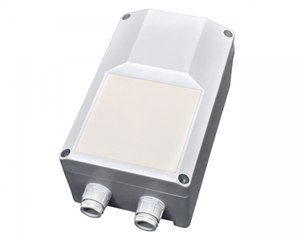
How to connect the socket-switch unit in one case: scheme and sequence of actions
Power socket, switch and lamp are the main components of any wiring in the apartment, private house, garage or other office space. Therefore, every caring homeowner should know, how to connect the circuit of all devices when carrying out repair work or construction of a new building with their own hands, including combined, which are combined in one case.
Not so long ago, the connection of wires from the switch to the AC circuit was carried out at random. Therefore in houses of old buildings the majority of such devices of an electric circuit still remain connected with violation of all safety rules.. Naturally, the operation of the switch itself was not affected, but the safety of such a device remains in doubt.
Recently, to save wires and space on the wall, manufacturers of electrical appliances have begun to combine and combine several devices in one case. At the same time most often combine the socket and the key switch so, how thanks to such scheme of connection the maximum efficiency and convenience of use of such electric devices is reached.
Connection of the combined socket and the switch: basic options
To date, you can consider several options for how to connect a combined outlet and switch. At the same time, recently in the apartment it was difficult to find several different functional electrical appliances in one building.

Therefore, the connection scheme of the socket and the switch was performed by connecting the wires in the junction box without combining these devices. Now we apply this option, if for some reason it is not possible to install such consumers next to each other. Although the separate connection of the socket and the switch has its advantages.
- Thanks to the availability of such devices, you can buy the cheapest socket and switch and connect them, combining in one scheme.
- Easy to connect such electrical devices allows you to do all the work with your hands.
- Separate connection of the socket and the switch increases safety of use of such devices, as the wiring to them is laid separately, which reduces the chance of a short circuit.
But recently in apartments more and more often began to use special blocks, in which manufacturers have combined an electrical outlet and a switch. At the same time the connection scheme of such a device is greatly simplified. First of all, it is due to that, that there is no need to lay two separate wires to each consumer. exept this, there are other advantages of such a block:
- if necessary, you can easily move the unit to another location, it is not necessary to lay two separate postings;
- there is no need to measure the height of the socket and switch separately, since both devices are combined in one housing;
- due to the high quality of such devices, they are used both inside, and outdoors;
- the combined block is convenient to install on any surfaces as stone or wooden, and concrete or plasterboard.
The only significant disadvantage of such a combined unit is the inability to replace one element, failed - socket or switch. In most cases, a complete replacement of the device is required. At the same time modern units are available with one-button, Two-key or three-key switches, combined in one case with the socket.


